Mastering Video Screen Recording on Mac: A Complete Guide
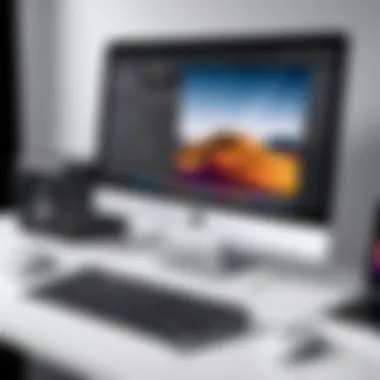
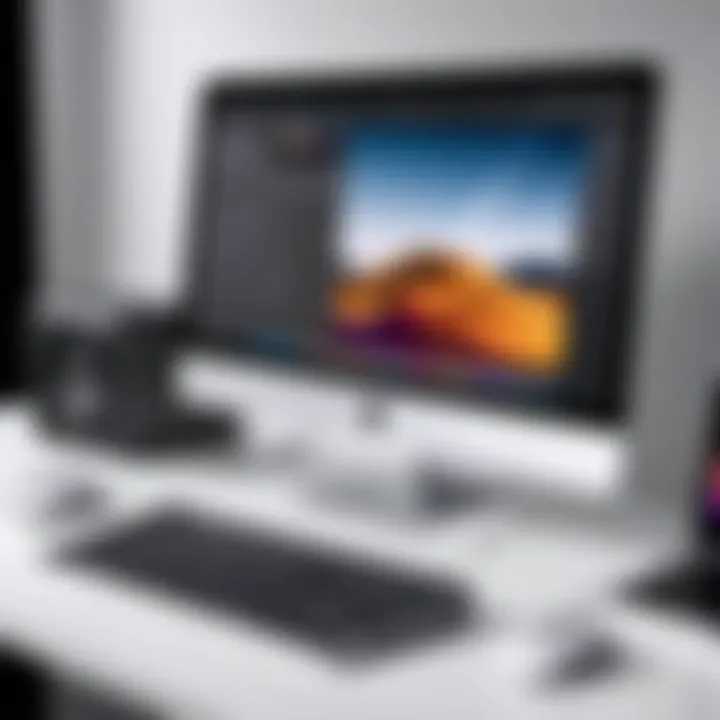
Intro
Video screen recording has become an essential capability for many Mac users, whether for creating tutorials, capturing gaming sessions, or preparing presentations. Understanding how to effectively utilize this feature can significantly enhance productivity and communication. This guide aims to provide a thorough examination of the available tools and methods for video screen recording on Mac, highlighting both native applications and third-party software.
Recording your screen allows for the sharing of knowledge and experiences in a highly visual format. The ability to record audio alongside video adds another dimension, making the resulting content more engaging and easier to understand. As this guide unfolds, we will discuss several options, focusing on their respective strengths and weaknesses, as well as practical usage tips to ensure high-quality recordings.
Overview of the Technology
Screen recording technology leverages built-in features of the macOS and various software applications to capture on-screen activity. This can include anything from desktop actions to streaming video.
Key specifications
The native screen recording tool is integrated within QuickTime Player and the Screenshot toolbar in macOS. This allows users to record their entire screen or just a selected area, along with audio input from the microphone or system sound. Key specifications to note include:
- Maximum resolution based on display settings.
- Support for recording audio along with video.
- Options for saving to different formats.
- Adjustable recording durations.
Unique selling points
The primary advantage of using macOS's native tools is their ease of use and no additional cost. You can start recording with a few simple clicks without needing extra installations. Meanwhile, third-party applications like OBS Studio or Snagit offer more advanced features, which might be necessary for professional-grade content creation.
For instance, OBS Studio allows for customizable layouts and live streaming. Snagit provides excellent editing features after capturing, making it a great choice for those who wish to enhance their recordings post-production.
Design and Build Quality
While the focus of this guide is on software capabilities, it's essential to acknowledge the role of your Mac's design and build quality in facilitating effective screen recording. A powerful Mac, such as those in the MacBook Pro or iMac line, ensures that the recording process runs smoothly without performance hitches.
Material used
Most Macs are constructed with robust materials like aluminum, which contributes to their longevity and durability. This build quality not only enhances aesthetics but also ensures better heat dissipation during intensive tasks like screen recording.
Ergonomics and usability
The design of Mac laptops and desktops promotes user-friendly experiences. High-resolution Retina displays provide stunning clarity, making it easier to review your recordings and ensure everything is captured correctly. The performance specifications of Mac devices, including RAM and CPU, contribute directly to how well recording software operates, allowing users to run multiple applications simultaneously without slowdown.
"Effective screen recording is not just about capturing visuals; it's about ensuring the process itself is seamless and professional."
In summary, understanding the technologies involved in screen recording will allow users to grasp the capabilities and limitations of their chosen tools. In subsequent sections, we will delve into specific software options available, along with best practices to elevate your screen recording tasks.
Prolusion to Video Screen Recording
Video screen recording has become a crucial tool for individuals and professionals alike, allowing for the capture of visual content directly from computer displays. The significance of this capability cannot be overstated in an increasingly digital and remote world. The advancements in technology have made screen recording not just a luxury but a necessity across various fields. This comprehensive guide aims to present the full picture of video-screen recording, especially in relation to Mac systems.
Understanding Screen Recording
Screen recording refers to the process of capturing the activity on a computer screen, often accompanied by audio narration or music. This functionality is especially important for creating tutorial videos, recording gameplay, or generating presentations that require visual demonstrations.
Many users find this feature valuable for educational content, enabling educators to provide visual aids alongside their lectures. This enhances learning experiences by providing a vivid representation of concepts. Similarly, for software developers and game streamers, it serves as a way to document processes, showcase skills, or troubleshoot issues by sharing recordings with peers.
Applications of Screen Recording
Screen recording has diverse applications that cater to various user needs. Here are some notable examples:
- Education: Teachers and educators utilize screen recordings to create online lessons that engage students, allowing for the replay of complex topics.
- Tech Support: Helpdesk teams can record their screens to demonstrate solutions, enabling users to troubleshoot common problems effectively.
- Content Creation: YouTubers and social media influencers often screen-record to produce high-quality demonstrations and tutorials that attract viewers.
- Gaming: Gamers frequently share their gameplay experiences, enhancing community engagement and fostering a culture of content sharing.
- Professional Training: Companies can generate training modules by recording software procedures, ensuring uniformity in employee onboarding and development.
Mac's Built-in Screen Recording Tools
Mac's built-in screen recording tools offer users a seamless way to capture their screens without relying on third-party software. Knowing how to effectively use these tools can significantly enhance productivity for various tasks, from creating professional presentations to sharing gameplay footage. Understanding these options can help users maximize their experiences with Mac for educational, professional, or personal needs.
QuickTime Player
Overview of QuickTime Player
QuickTime Player is an integral part of the Mac operating system. It is primarily recognized as a media player, yet it also possesses robust screen recording capabilities. This dual function makes it an attractive choice for many users. With its user-friendly interface, QuickTime Player simplifies the recording process. You do not need advanced skills to operate it. The key characteristic that stands out is its native integration with the Mac environment, ensuring efficient and straightforward usage.
An important feature of QuickTime Player is its ability to record your entire screen or just a specific portion. This flexibility allows users to focus on the relevant content while excluding unnecessary visual elements. However, it may not provide as many editing tools or customization options as some other dedicated software, which could be a downside for professional video producers looking for advanced functions.
Recording Methods
When it comes to recording methods, QuickTime Player’s simplicity is commendable. Users can easily initiate recordings from within the application, choosing between full screen or a selected area. This facilitates quick captures, especially during live presentations or tutorial sessions. The ability to add audio input, whether from built-in microphones or external ones, is also crucial for creating informative content.
One unique aspect is the capability to include camera feeds in the recordings. This is beneficial for making instructional videos or enhancing presentations. However, for some advanced users, the available recording formats might be limiting, as QuickTime does not support all formats. This can be a consideration for those preferring a versatile output.
Exporting Your Recording
Exporting your recording is as vital as recording itself. QuickTime Player provides multiple options for exporting, ranging from different video formats to resolutions. This feature makes it easier for users to prepare recordings compatible across various platforms. The export settings are straightforward, allowing for quick adjustments.
The convenience of using QuickTime for exporting recordings directly within the app often outweighs its limitations. However, users need to ensure that they understand the best export settings for their intended use, as not all formats will be suitable for every platform. Export settings might be simpler compared to dedicated video editing software which allows intricate control over compression and quality settings.
Screenshot Toolbar
Accessing the Screenshot Toolbar
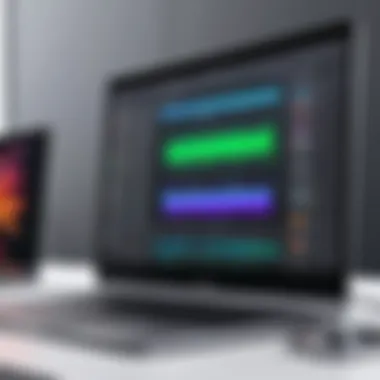
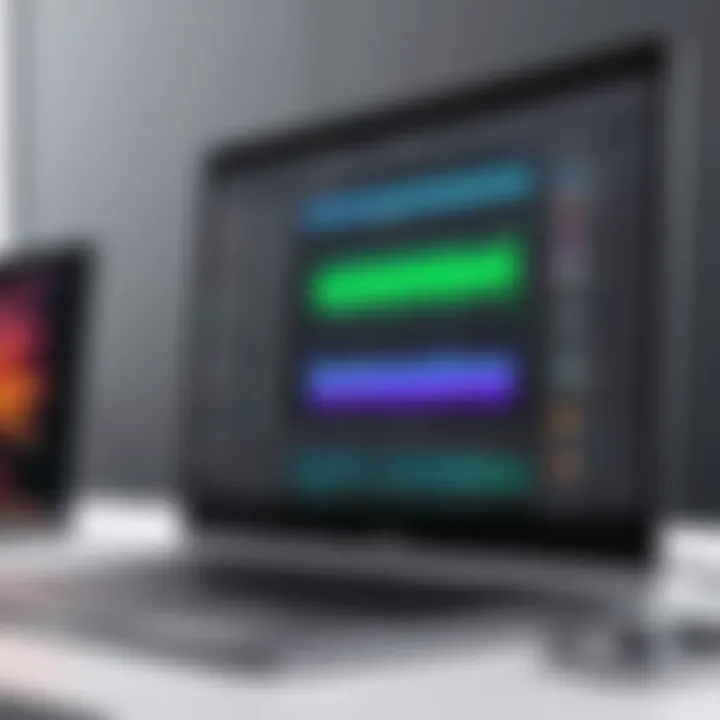
The Screenshot Toolbar is a built-in feature that enables users to take screenshots and record screens with minimal effort. Accessing this tool is straightforward, requiring just a quick keyboard shortcut: Shift + Command + 5. Upon its launch, the toolbar presents various options for taking screenshots or recording. This accessibility is a significant advantage for users engaged in tasks that require quick captures.
The unique characteristic of the Screenshot Toolbar is that it offers a simple interface, ideal for users who do not want complicated processes. For casual use, this is especially appealing, as there is no need to navigate through multiple menus. Yet, the features may feel limited for users looking for more sophisticated options not available in the toolbar.
Recording Options
Within the Screenshot Toolbar, recording options give users different functionalities. You can select the entire screen or just a portion for recording. It also provides options to choose audio sources for the recordings, including external microphones which allow narrating while capturing.
This flexibility of choice is beneficial, especially in educational contexts or for tutorials. Users can easily adapt their recordings to their specific requirements due to these options. However, there may be fewer editing tools after recording, which means video polish post-capture might require additional software.
Saving and Sharing
When it comes to saving and sharing, the Screenshot Toolbar makes the process efficient. Once the recording has concluded, users can save their projects to desired locations swiftly. Additionally, sharing through the toolbar is facilitated by options to quickly upload recordings to various platforms like Facebook or YouTube directly.
The ease of use shines here, core for those who prioritize speed and simplicity. Notably, while users can share files easily, they should also be aware of file sizes and formats. Underestimating these factors may result in compatibility issues on certain platforms, a point to bear in mind while sharing recordings.
Third-Party Screen Recording Software
The use of third-party screen recording software on Mac offers various benefits compared to built-in options. These specialized tools are designed to provide additional features and capabilities that enhance the overall screen recording experience. They can cater to users with specific recording needs, such as detailed editing and advanced sharing options. Understanding these tools is crucial for anyone looking to achieve high-quality recordings or for those who desire more creativity in their video projects.
Overview of Popular Options
ScreenFlow
ScreenFlow stands out due to its robust editing capabilities integrated within the application. It is particularly known for its user-friendly interface, which makes it accessible for both novice and experienced users. The key characteristic of ScreenFlow is its dual functionality as both a screen recorder and a video editor. This combination allows users to record, edit, and publish their videos from one platform, simplifying the workflow.
One unique feature of ScreenFlow is its ability to record multiple screens simultaneously. This is advantageous for users presenting from multiple sources, such as when displaying presentations along with their desktop. However, this powerful tool comes at a cost, which might make it less appealing for casual users or those on a tight budget.
Camtasia
Camtasia is another well-regarded option in the screen recording software space. It is recognized for its extensive library of assets and templates, making video production easier and faster. The primary strength of Camtasia lies in its ability to create professional-looking videos without requiring advanced editing skills.
A standout feature of Camtasia is its extensive annotations library, allowing users to add callouts, shapes, and text efficiently during editing. While its capabilities are extensive, some users may find it resource-intensive, which could lead to performance issues on older Macs. Thus, while Camtasia offers many features, those with limited system resources should exercise caution.
OBS Studio
OBS Studio is a popular choice among live streamers and gamers. It’s an open-source software that provides flexible recording options. A key characteristic is its advanced settings for audio and video, allowing precise control over output quality. This makes it a suitable choice for users who prioritize customized output settings that must meet particular requirements.
A unique feature of OBS Studio is its scene composition, allowing users to switch between various media sources and layouts during a recording. This flexibility is beneficial for dynamic presentations or tutorials. However, the learning curve can be steep for new users because of its complexity. Thus, new users should be prepared to spend time learning the interface.
Comparative Features
User Interface Comparison
When comparing user interfaces, ScreenFlow is known for its minimalist design, making it intuitive for users at all skill levels. This contributes to easier navigation and quicker access to features, enhancing user experience for both beginners and experts.
Camtasia also offers a clean interface but includes a wealth of features that might overwhelm new users. However, it provides a comprehensive tutorial system that helps to mitigate this issue.
In contrast, OBS Studio's user interface can appear cluttered due to its multitude of options and settings. While powerful, this complexity can turn away those who prefer a straightforward approach. Thus, while each tool serves similar needs, the choice may depend on user preferences for interface simplicity versus control versatility.
Recording Quality and Formats
The recording quality produced by each software varies. ScreenFlow typically supports recording in high-definition formats, ensuring that the outputs meet professional standards. This is particularly advantageous for tutorial and educational videos where clarity is crucial.
Camtasia also supports high-quality recordings and offers various export formats to accommodate different platforms. This flexibility enhances its suitability for various users, from educators to marketers.
OBS Studio excels in recording quality, especially for live streaming with customizable options for video bitrate and resolution. However, beginners may need assistance tweaking these settings to optimize quality. Thus, understanding one's primary goals will dictate which software's recording quality features best suit the user's needs.
Editing Capabilities
ScreenFlow's editing capabilities make it a strong choice for users seeking a comprehensive tool. It allows for detailed editing, including multi-track editing and easy manipulation of video clips. Moreover, the built-in transitions and effects can help create engaging content without needing additional software.
Camtasia also offers editing features, including drag-and-drop functionality for adding visual elements, making it user-friendly. However, it might lack some of the advanced editing tools that ScreenFlow provides. Thus, while Camtasia is ideal for quick edits, those needing detailed adjustments might need to explore other tools.
While OBS Studio's primary focus is on recording and streaming, it lacks significant built-in editing functionalities. This means users must engage with third-party video editing software to finalize their content. Overall, each software presents unique advantages and potential drawbacks worth considering based on individual recording and editing needs.
Understanding the capabilities of third-party screen recording software is essential to maximizing the benefits of video content creation on Mac.
Setting Up for Effective Screen Recording
Setting up for effective screen recording on a Mac is a crucial aspect often overlooked by many users. The right setup can significantly enhance the quality and efficiency of your recordings. Proper preparation not only ensures that your recordings are visually appealing but also lays the groundwork for high-quality audio and a hassle-free editing process. Key elements of preparation include understanding system requirements, optimizing RAM and storage, as well as configuring the appropriate recording settings. Each of these parts plays a distinctive role in ensuring a smooth recording experience and can prevent common issues down the line.
Preparing Your Mac
System Requirements
Before you embark on screen recording, it’s essential to be aware of the system requirements for the software you choose to use. Most screen recording tools have specific specifications that must be met for optimal performance. Generally, a Mac with macOS Mojave (10.14) or later is recommended for most modern software. A minimum of 4GB of RAM is also advised, although 8GB or more is preferable to ensure smooth operation.
Having the right system requirements eliminates lagging and freezing during the recording process, which can be disruptive. Up-to-date macOS versions also include features that enhance screen recording functionality, making them a popular choice among users. However, if your Mac is running an outdated version, you might miss out on some useful updates and functionalities.
RAM and Storage Considerations
RAM and storage capacity are crucial considerations before starting any recording session. RAM impacts how many tasks your Mac can handle simultaneously. If you are running multiple applications while recording, having adequate RAM is vital to maintain performance. For basic screen recording, a system with 8GB of RAM is considered sufficient. However, for editing or multitasking while recording, 16GB or more is recommended.
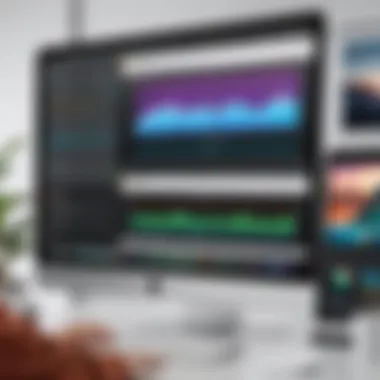
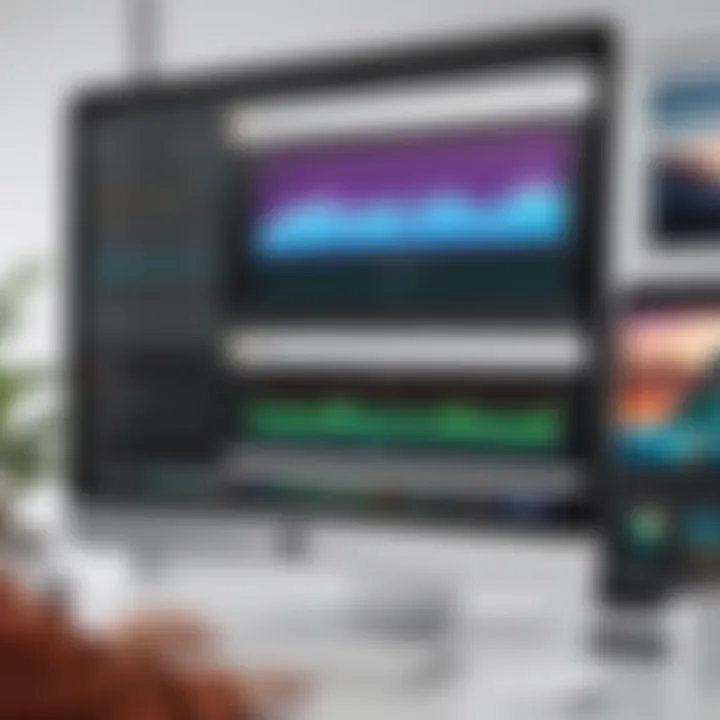
Storage is another critical element. Screen recordings, especially at high resolutions, can consume large amounts of disk space. Always ensure you have ample free storage on your Mac. Ideally, an SSD is preferred over a traditional HDD for faster data access times and smoother operation. Without sufficient storage space, you may encounter interruptions, resulting in lower quality recordings.
Choosing Recording Settings
Resolution and Frame Rate
When recording, resolution and frame rate are fundamental factors that define the quality of your video. Standard resolutions include 1080p (Full HD) and 720p (HD). Higher resolutions provide clearer images but require more processing power and storage space. A frame rate of 30 frames per second (fps) is standard for general recordings. However, for graphics-heavy recordings or gameplay, increasing the frame rate to 60 fps can yield smoother results.
Choosing the right resolution and frame rate depends on the purpose of the recording. Higher settings are beneficial for detailed tutorials or presentations where clarity is critical. Still, they can lead to larger file sizes, which may complicate sharing and storage. Therefore, it’s important to balance quality with practicality.
Audio Settings
Audio settings are as important as video settings for screen recordings. Ensure to select the correct microphone input to capture clear narration. High-quality audio can enhance the viewer's experience and provide additional context to the visual elements. Most recording software allows you to choose system audio or external mic inputs, so understanding these options will lead to better recordings overall.
For most cases, recording with a sample rate of 44.1 kHz or 48 kHz is adequate. Be mindful of background noise, as it can detract from the clarity of your audio. Use a quiet environment or consider using a directional microphone to minimize interference from external sounds.
"Setting up your Mac correctly before starting a screen recording can save time and improve your overall content quality."
Best Practices for Screen Recording
Video screen recording is a skill that can greatly enhance communication and productivity, especially on a Mac. Knowing how to effectively capture your screen helps create instructional content, tutorials, and presentations. Following best practices ensures that your recordings are clear, engaging, and of high quality. These practices cover pre-recording checks, recording guidelines, and post-recording recommendations that ultimately result in better content.
Pre-Recording Checks
Clearing Desktop Clutter
Before beginning a screen recording, it is crucial to clear desktop clutter. This practice not only provides a cleaner visual presentation but also keeps the focus on the content being discussed. A cluttered desktop can distract viewers and detract from the professionalism of your recording.
One significant aspect of clearing desktop clutter is organization. When files and applications are neatly arranged or hidden, it enhances the viewer’s experience. Viewers are less likely to be distracted by unnecessary icons or notifications popping in and out of view. Furthermore, a neat desktop conveys a sense of care regarding the content being shared, making it a beneficial practice in this article.
However, clearing clutter does not come without its minor drawbacks. It requires preparation time that might delay your recording schedule. Minimal desktop organization is essential but should be balanced against the urgency of getting the recording done promptly.
Turning off Notifications
Turning off notifications is another critical step in preparing for a screen recording. Notifications from apps, messages, or calendar reminders can suddenly interrupt the recording process. Such interruptions not only break the flow of the presentation but can also confuse the audience if a notification appears on-screen.
By disabling notifications, you ensure that your viewer’s attention remains focused on the main content. A key characteristic of this practice is its simplicity; it takes only moments to silence notifications but carries a substantial impact on the quality of your recording. This step is essential in maintaining professionalism, even if it seems trivial, thus making it a popular choice among content creators.
On the downside, some users may worry about missing important messages while recording. Consider using “Do Not Disturb” settings during critical recordings to avoid distractions while ensuring notifications are handled promptly afterward.
Recording Guidelines
Maintaining Focus and Pace
Maintaining focus and pace throughout your recording is vital for viewer engagement. Viewers appreciate a clear, steady flow of information without abrupt changes in speed or tone. A consistently focused approach ensures that viewers follow along without losing track of the content.
This focus enables you to cover all necessary points without overwhelming your audience. For this article, keeping a measured pace and staying on topic fosters clarity and enhances the overall message. Giving each segment adequate time for explanation is critical to ensure understanding, particularly in instructional videos.
Nevertheless, maintaining focus can be challenging. Nervousness or unexpected interruptions may lead to hasty deliveries. It is best to practice your presentation multiple times to build confidence and achieve a natural rhythm during the recording.
Effective Commentary Techniques
Effective commentary techniques significantly contribute to the quality of your screen recordings. Clear, articulate speech allows you to convey this information better. Your audience should easily understand your explanations, which adds value to your recording.
One powerful characteristic of good commentary is using varied intonation. A monotonous voice can lose viewers’ interest quickly, while an engaging tone can captivate the audience. This choice is advantageous in this article as it helps strengthen the message you aim to communicate.
However, trying too hard to sound natural can lead to stumbling over words or awkward pauses. It is essential to balance being conversational while ensuring clear communication. Practicing your commentary in advance can help you be more confident and articulate during recording.
Editing and Enhancing Screen Recordings
Editing and enhancing screen recordings is a significant part of the recording process. This step not only refines the final output but also elevates content quality. Thoughtful editing can ensure a clear message and a professional appearance. Without proper editing, recordings may feel jumbled, with unnecessary portions or lack of emphasis on critical points. The aim here is to take raw footage and turn it into a polished, engaging piece.
Basic Editing Techniques
Basic editing techniques lay the groundwork for improving screen recordings. They help make content more digestible and visually appealing. Understanding these techniques is essential for anyone looking to convey their message effectively.
Trimming and Cropping
Trimming and cropping are the most fundamental forms of editing. Trimming allows users to remove unwanted sections from the start or end of a recording. This ensures that the viewer concentrates only on relevant content. Cropping focuses on adjusting the frame's dimensions, eliminating distractions from the periphery. This kind of adjustment focuses the viewer's attention squarely on the main subject.
A key characteristic of trimming and cropping is their ability to enhance viewer engagement. They streamline videos, making them easier to follow. This simplicity leads to better retention of information. Trimming is often seen as a beneficial approach because it quickly removes fluff from recordings, saving both time and viewer patience.
However, one should consider that excessive trimming can potentially lose important context or content. It is about striking a balance between removing redundancies and retaining valuable information. Cropping has the unique feature of focusing the subject more acutely, but it can lead to loss of important visual context. Careful thought should go into how much to crop, ensuring important surrounding elements are not lost.
Overlaying Text and Graphics
Overlaying text and graphics serves another important function in editing. Text can offer essential information, such as titles or instructions, in a visual format. Graphics can enhance understanding and retention by providing visual cues to accompany spoken content. These elements direct attention and can clarify complex ideas.
The major advantage of overlaying elements is the enhanced communication of ideas. It allows for conveying information visually while reinforcing audio content. This is especially crucial in educational materials where clarity is necessary.
Nonetheless, there are challenges. Overloading a screen with text or graphics can overwhelm viewers, leading to confusion rather than clarity. The key lies in minimalism—using overlays judiciously ensures they contribute meaningfully to the narrative.
Adding Music and Narration
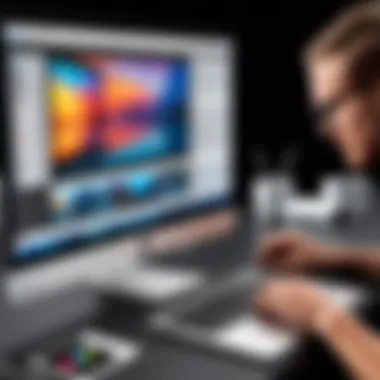
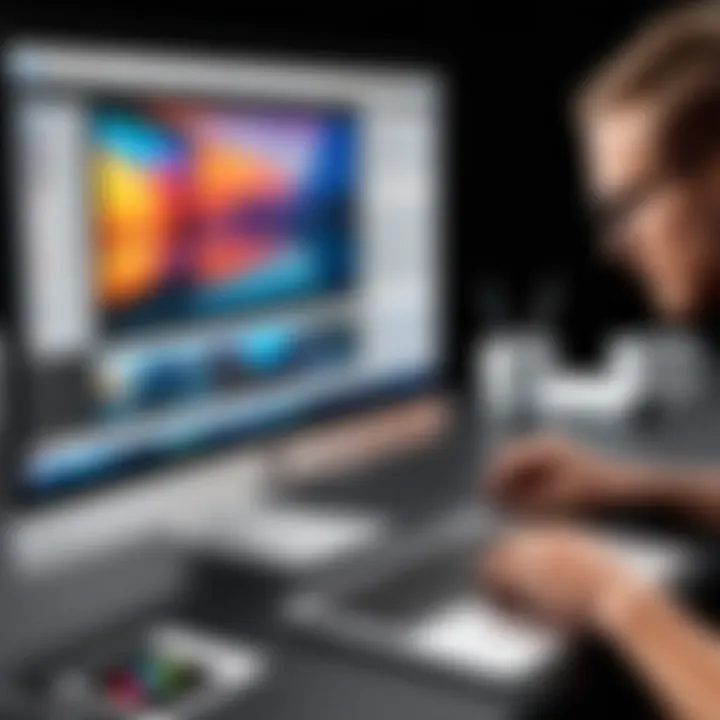
Adding music and narration is a creative editing technique that can enhance recordings significantly. Music sets the tone and can evoke certain emotions. It can transform straightforward presentations into more engaging stories.
Narration is equally powerful. A well-articulated voice can clarify messages and enliven presentations. Choosing the right narrator and ensuring a clear, engaging delivery is essential. Both music and narration add a layer of professionalism, making content more enjoyable to consume.
In summary, editing and enhancing recordings is key to effective communication. Techniques like trimming, cropping, overlaying text, and adding audio elements can significantly improve viewer experience. Careful consideration of how these elements work together leads to high-quality recordings that are both informative and engaging.
Sharing and Exporting Screen Recordings
Sharing and exporting screen recordings is a crucial aspect of video creation on a Mac. It allows users to distribute their content efficiently, reaching a wider audience. The choice of format and platform can affect the quality and accessibility of the video. Thus, understanding the best practices in sharing and exporting can enhance the impact of the content produced.
When screen recordings are properly shared and exported, they can serve various purposes, from tutorials and presentations to social media posts and professional pitches. This section will provide insights on key formats, compatibility issues, and various platforms available for sharing.
Choosing the Right Format
Common File Formats
The choice of file format is vital when exporting screen recordings. Common digital formats include .mp4, .mov, .avi, and .gif. Among these, .mp4 is noteworthy for its universal acceptance and high compression efficiency. This format preserves video quality while ensuring smaller file sizes, making it an ideal choice for streaming on the internet.
The unique feature of .mp4 is its compatibility across most devices and platforms. This makes it easier to share recordings without worrying about playback issues. However, the compression can sometimes lead to a loss in quality if not managed well, which is something to consider when aiming for high-definition outputs.
Compatibility Considerations
Compatibility is a significant factor to keep in mind while sharing recordings. Users must ensure that their chosen format aligns with the target platform. For example, video designed for social media may require different specifications compared to a presentation format.
A key characteristic of compatibility considerations is the need for codecs. Different platforms may utilize various codecs that can impact the playback. Ensuring your recording uses widely accepted codecs, like H.264, can help in avoiding issues when sharing videos across various platforms.
Platforms for Sharing
YouTube
YouTube plays a prominent role in the sharing of video content. This platform not only allows unrestricted access to a vast audience but also offers tools for engagement such as comments and likes. The ease of uploading and extensive search capabilities make it a beneficial choice for those looking to reach larger viewers.
A unique feature of YouTube is its monetization potential. Creators can earn revenue through ad placements and subscriptions, making it valuable for serious content creators. However, content may sometimes get lost among the vast number of uploads, making visibility a concern.
Vimeo
Vimeo attracts users looking for quality and artistry. It offers high-quality video formats and greater control over privacy settings. Users can choose whether to allow downloads or share their videos publicly. This can be particularly beneficial for professionals seeking to showcase their work without the clutter of ads.
The unique feature of Vimeo is its community aspect. It caters to a more niche audience who appreciate high-quality video production. Nonetheless, the platform may have a smaller reach and could require a subscription for advanced features, which is something to consider.
Social Media
Sharing recordings on social media platforms like Facebook, Instagram, or Twitter allows for immediate audience feedback. Each platform has its own video specifications, and adapting to those can help in achieving better engagement.
A key characteristic of social media is the rapid sharing capability. Videos can go viral, reaching a much larger audience quickly. However, the limitations on video length and the competitive nature of feeds can make it harder for users to capture attention effectively.
In summary, selecting the right format and platform is essential for effective sharing and exporting of screen recordings. The nuances in file types, compatibility issues, and social media engagement can significantly impact the effectiveness of the content. Taking these factors into account can ensure that your screen recordings achieve their intended purpose.
Troubleshooting Common Issues
Troubleshooting common issues is a crucial aspect of the video screen recording process, especially for users who rely on this technology for various purposes. Whether for professional content creation, online tutorials, or personal projects, encountering problems can disrupt workflow and hinder productivity. Understanding how to address audio issues and recording quality concerns can greatly enhance the user experience and ensure that your recordings meet the desired standards. This section serves to equip users with the knowledge to identify and rectify these common pitfalls, thereby improving the overall efficacy of screen recordings.
Audio Issues
Audio is a key component of any screen recording. Users often face multiple challenges regarding sound capture. Common problems include:
- No Audio in Recording: This might happen if the input source is not set correctly. Ensure that the right microphone is selected in your recording software settings.
- Low Volume Levels: If the recorded audio is barely audible, check the microphone settings. Adjust the levels within the system preferences and increase the gain on your microphone.
- Background Noise: External sounds can be distracting. To combat this, use noise-cancelling microphones, and try to record in a quiet environment.
"Good audio quality can elevate a screen recording from mediocre to professional."
- Sync Issues: Sometimes, audio may not sync with the recorded video. This can often be fixed in post-production by shifting the audio track to align with the video. Use your editing software's timeline features to correct these misalignments.
By addressing these audio-related issues, users can greatly improve their recordings and create a more polished final product.
Recording Quality Concerns
Recording quality directly impacts the effectiveness of the content produced. Factors that can compromise recording quality include:
- Resolution and Frame Rate: Ensure your settings reflect the desired output. Higher resolutions and increased frame rates can enhance clarity and make content more visually appealing.
- Software Settings: Check if your software is set to record in the best possible quality. For instance, some software allows for different quality settings. Lower settings can lead to grainy or pixelated recordings.
- Performance Issues: Running too many applications during recording can affect performance. Close unnecessary applications and processes to improve the recording experience.
- Screen Resolution: The screen resolution of the Mac itself can influence the output. Make sure it is set appropriately for the project at hand.
By being mindful of these factors, users can ensure their recordings are not only functional but also polished and professional. Addressing audio issues and recording quality concerns is essential for creating engaging and high-quality screen recordings.
Closure
The conclusion of this article serves as a critical wrap-up of the insights and knowledge shared throughout. The topic of video screen recording on Mac encompasses a variety of tools and methodologies designed to enhance user experience and productivity. Understanding these elements enables users to maximize their use of screen recording capabilities, whether for professional or personal projects.
Recap of Key Points
In summary, this guide has explored several important aspects:
- The built-in options such as QuickTime Player and the Screenshot Toolbar, detailing their features.
- Third-party software alternatives like ScreenFlow, Camtasia, and OBS Studio, with a focus on their unique advantages.
- Essential best practices for preparing and executing screen recordings effectively.
- Techniques for editing recordings to create polished final products.
- Options for sharing recordings across various platforms like YouTube and Vimeo.
- Common troubleshooting methods for audio issues and recording quality concerns.
These points reflect not only the functionality of the tools but also the strategic approaches that lead to high-quality content creation. Each step discussed allows users to create engaging content that communicates their message clearly.
Future of Video Screen Recording on Mac
Looking ahead, the future of video screen recording on Mac appears promising. As technology evolves, we can expect more advanced features integrated into existing software applications. Innovations may include improved recording quality, enhanced resolution options, and more intuitive user interfaces.
Moreover, with the rise of remote work and virtual collaboration, the need for effective screen recording tools will only grow. Users may anticipate deeper integration with cloud services, facilitating easier sharing and collaboration on recorded content.







